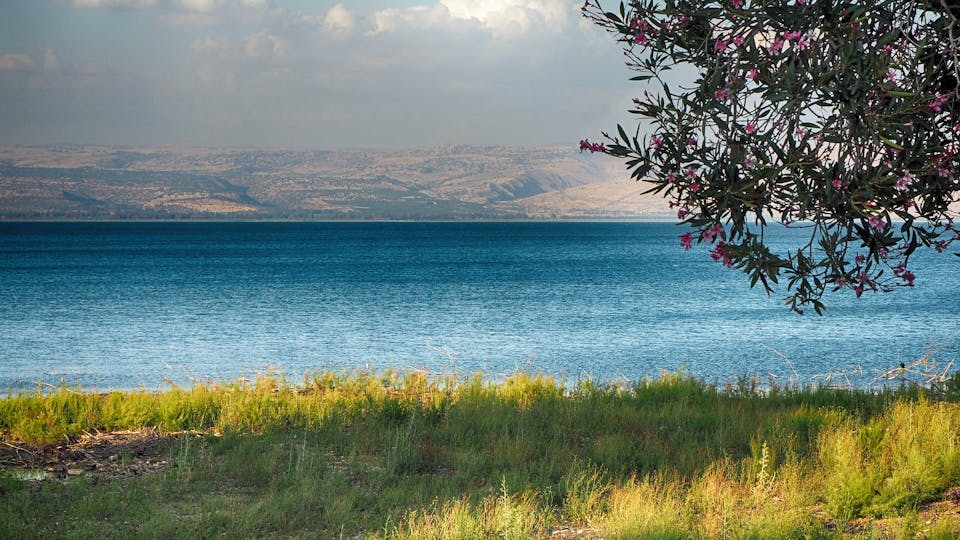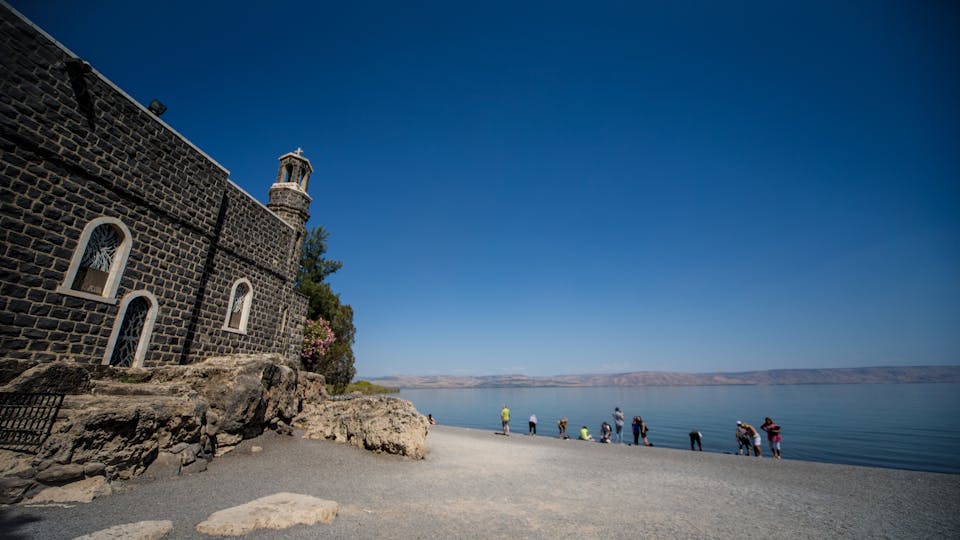The Sea of Galilee - Israel’s Musical Lake

Where is the Sea of Galilee?
The State of Israel is not just a biblical modern day miracle; it also features several geographical wonders that are unique worldwide.
One of these is the Sea of Galilee, which, at 209 meters below sea level, is the lowest freshwater lake on Earth! The other lowest lake in the world is the Dead Sea, which is a saltwater lake.
Not bad for a country the size of New Jersey.
Located in northeast Israel between the Golan Heights and the Galilee region, the Sea of Galilee rests at the bottom of the Jordan Rift Valley, the longest tectonic rift on earth that is caused by the shifting of the African and Arabian Tectonic Plates.
Consequently, the region has experienced frequent earthquakes, and in the past, volcanic activity as is evident by the geology of Galilee.
Resting by the ancient Via Maris Road that linked Egypt with the northern empires, the Hebrews, Greeks, Hasmoneans, and Romans built flourishing towns and settlements on the lake’s fertile shores.
The first-century historian Josephus Flavius was so impressed by the region that he called its beauty the "… ambition of Nature," describing a thriving fishing industry of hundreds of boats regularly working on the pastoral lake.
Fed partly by underground springs, the Lake’s main source of water is the Jordan River (and a few smaller tributaries) which flow through it down to the Dead Sea in the south.
Called by different names throughout its history according to the various empires, seasons, and communities on its shores, with the changing of times the Lake's name also changed.
Called the Sea of Kinneret, Sea of Ginosar, Sea of Galilee, Sea of Tiberias, and even "Bahr al-Minya” as it was called in Arabic during the Mameluke period, the name that prevailed and made its way into Modern Hebrew is KINNERET. This is how it first appeared in the Bible (Numbers 34:11, Joshua 13:27) where it is actually spelled כנרות "KINNEROT," which is a plural noun in Hebrew.
Where Does The Name Come from?
This Modern Hebrew name relates to a popular etymology originating from the Hebrew word KINNOR, meaning “harp” or “lyre,” possibly relating to the shape of the lake.
And though scholars still debate the origin of the actual name, most Israelis deeply connect with the musical reference of the name and have fully embraced it by now with affection.
In the New Testament, Luke called it the “Lake of Gennesaret (Luke 5:1), referring to the fertile plain of Ginosar that lies on the western shore of the Lake and is the site of ancient Magdala and the modern Genosar Kibbutz.
Mathew, Mark, and John, however, called the lake the “Sea of Galilee” or the “Sea of Tiberias,” reflecting the strong connection to the broader region and the ruling Roman Emperor. Following the Byzantine period, the Lake was known in Arabic as "Bahr al-Minya," or the "Sea of Minya,” commemorating the Minya Governorate from Upper Egypt who ruled the region temporarily.
For Evangelical Christians, the region is extremely important since most of the ministry of Jesus took place along the shores of the Sea of Galilee.
During that Second Temple era, towns and fishing villages were spread all around the lake, and the Gospels give us an account of a very dynamic, busy, and fruitful region.
Some of the disciples were recruited from the very shores of the Kinneret; and the majority of Jesus’ recorded miracles, teachings, and parables were given in that region.
These include His walking on the water, calming the storm, the miraculous catch of fish, the feeding of the five thousand, and of course the Sermon on the Mount. No wonder some scholars refer to the KINNERET as the “Fifth Gospel.”

Some More History
Following the defeat of Bar Kokhva's revolt during the second century AD, the Romans banned all Jews from Jerusalem and the center of Jewish life shifted to the Galilee and the City of Tiberias where the Jerusalem Talmud was compiled.
This essentially replaced the biblical Judaism that was based on the sacrificial system that was no longer practicable with the destruction of the Temple and the priesthood.
After the Byzantine Christians lost control of the region to subsequent Islamic empires following the seventh century, the towns and villages in the area were gradually abandoned, setting the stage for the great Crusader’s defeat by Saladin at the Battle of Hattin just above the shimmering lake.
The lake and the region held little importance during the Ottoman period with only a meager Jewish population scattered here and there, but all that changed with the arrival of Jewish pioneers during the early years of the 1900s.
They began to cultivate the neglected region, drain the swamps, and establish cooperative farming villages (kibbutzim) in the vicinity of the lake.
Following the establishment of the State of Israel, the Kinneret Lake was linked to the country's new water infrastructure by the National Water Carrier, a project that has since been replaced by other water sources to preserve the Lake from being over-pumped.
Following repeated years of drought and dry winters, the government of Israel approved a plan in 2018 to replenish the Lake artificially by pumping desalinated Mediterranean water into it in an effort to stop the water level from plunging below the point of irreversible ecological damage, a plan that is presently being studied.

Why You Need to Visit The Sea of Galilee
Tourism naturally abounds around the Sea of Galilee as historic and biblical sites attract both local and international tourists. The majority of the visitors are Christian pilgrims eager to see the actual places where Jesus lived, taught, and performed miracles.
But not only spiritual reasons bring visitors.
Another key attraction is the Lake itself which became a very popular vacation and recreation spot for many Israelis with public beaches and water parks all around the Sea of Galilee. The robust economy, apart from tourism, includes fishing and orchards of bananas, dates, mangoes, grapes, olives, and a whole lot more.
The warm waters of the Sea of Galilee support a rich variety of flora and fauna, with the most famous fish being the “St. Peter’s Fish” that many of our guests enjoy while dining by the Lake.
Traveling in Israel, the Lake of Kinneret is a MUST, and our Sar-El team is standing by to take you there.